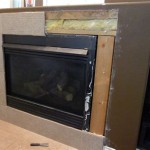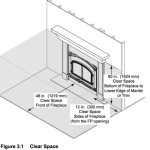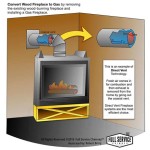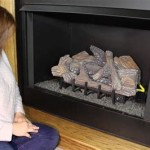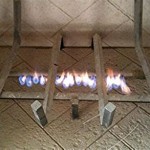Gas Fireplace Framing: A Comprehensive Guide
Gas fireplaces offer a cozy and inviting ambiance to any living space. However, installing one requires careful consideration of the framing process to ensure safety, efficiency, and aesthetic appeal. This article provides a comprehensive guide to gas fireplace framing, covering essential aspects from materials to installation techniques.
Understanding Framing Requirements
Framing a gas fireplace involves creating a robust structure that supports the fireplace insert, hearth, and surrounding materials. The framing must adhere to local building codes and manufacturer specifications to maintain safety and prevent potential hazards. Key factors to consider include:
- Fireplace Type: Different fireplace inserts have varying weight and heat output, influencing framing requirements.
- Hearth Material: The material chosen for the hearth, such as tile, stone, or concrete, impacts framing dimensions and load-bearing capacity.
- Surrounding Walls: The framing needs to accommodate the fireplace's width, depth, and any decorative elements, ensuring adequate clearance and fire safety.
It's crucial to consult with a qualified contractor or building inspector to ensure proper framing is in place before starting the installation process.
Materials and Techniques
The framing process typically involves using a combination of lumber and fire-resistant materials. Common materials include:
- Fire-Rated Drywall: Offers essential protection from heat and fire, minimizing the risk of spreading flames.
- Steel Studs: Provide structural support and withstand the high temperatures generated by a gas fireplace.
- Fire-Resistant Insulation: Reduces heat transfer and enhances safety by minimizing the risk of ignition.
- Firebrick: Creates a protective barrier around the fireplace insert and prevents excessive heat transfer to surrounding walls.
Framing techniques often involve creating a dedicated frame for the fireplace insert, using steel studs and fire-rated drywall for added strength and heat resistance. The hearth is typically supported by a separate, reinforced structure that can handle the weight of the hearth material.
Essential Considerations for Gas Fireplace Framing
When framing a gas fireplace, it is essential to prioritize safety and compliance with building codes. Key considerations include:
1. Clearance Requirements
Maintaining adequate clearance between the fireplace insert and surrounding walls and combustible materials is crucial for preventing fire hazards. The manufacturer's specifications should be carefully followed, as clearance requirements vary depending on the fireplace model and its heat output.
2. Ventilation
Proper ventilation is vital for removing combustion byproducts and preventing carbon monoxide buildup. Ensure adequate ventilation is provided by following the manufacturer's instructions and local building codes. This might involve incorporating vents or chimneys for proper gas exhaust and fresh air intake.
3. Gas Line Installation
The gas line installation must be carried out by a licensed and certified plumber or gas fitter. The line should be properly sized to support the fireplace's gas consumption and should be checked for leaks before operation. Appropriate fittings and materials should be used to ensure a safe and efficient connection to the fireplace.
4. Electrical Wiring
If the fireplace has an electric ignition system or features like an integrated blower, ensure that appropriate electrical wiring is installed to provide power to the fireplace. The wiring should be properly sized, safely grounded, and protected by a dedicated circuit breaker for safety.
5. Aesthetics and Finishing
After framing the fireplace, it's important to consider the aesthetic appeal and finishing touches. The hearth can be tiled, covered with stone, or finished with other materials to complement the surrounding décor. The fireplace opening and surrounding walls can be finished with drywall, molding, or other decorative elements.
Remember that proper framing is a crucial step in the gas fireplace installation process. It ensures safety, structural integrity, and aesthetic appeal. Consulting with a qualified contractor and obtaining building permits before starting the project is essential for a successful installation.

Install A Gas Fireplace Framing Finishing Pt 2 Diy Living Room Remodel

How To Frame In A Gas Fireplace Framing For Brick Makeover

Build A Contemporary Gas Fireplace

How To Install A Gas Fireplace Diy Built In

Gas Fireplace Stone Cladding Bunnings Work Community

How To Install A Gas Fireplace With Tile Surround And Wood Mantel Sima Spaces

Ventless Gas Fireplace Insert Installation Framing Wall For

All About Prefabricated Fireplaces Chimney Savers

Fireplace Cold Air Issues Www Mygasfireplacerepair Com

How To Install A Gas Fireplace Framing Finishing Tylynn M
Related Posts

